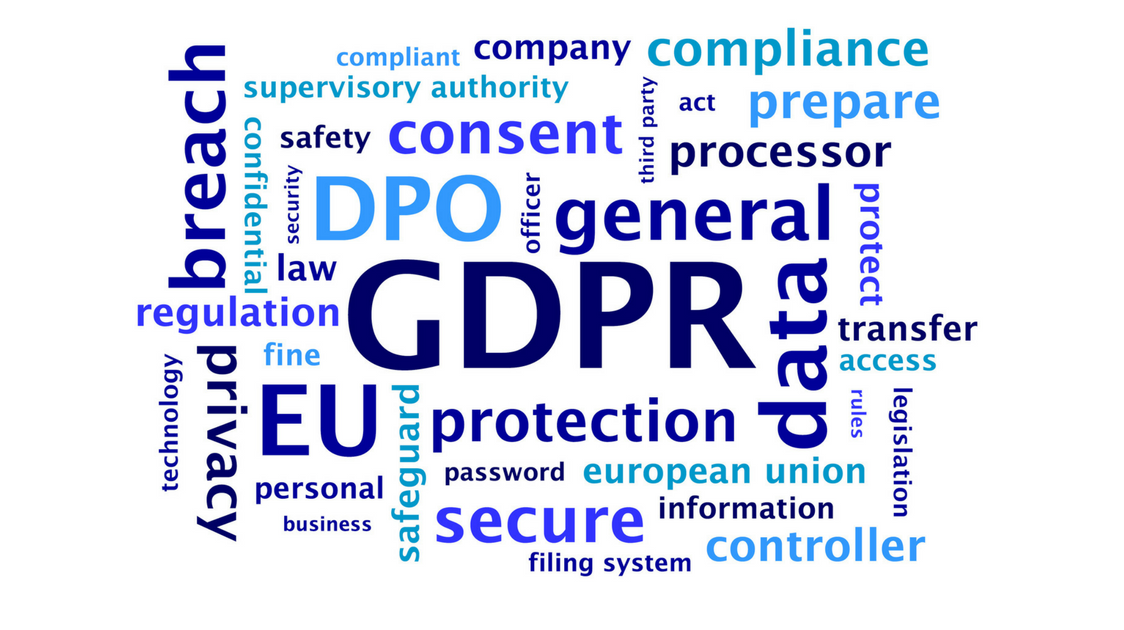Email blunders
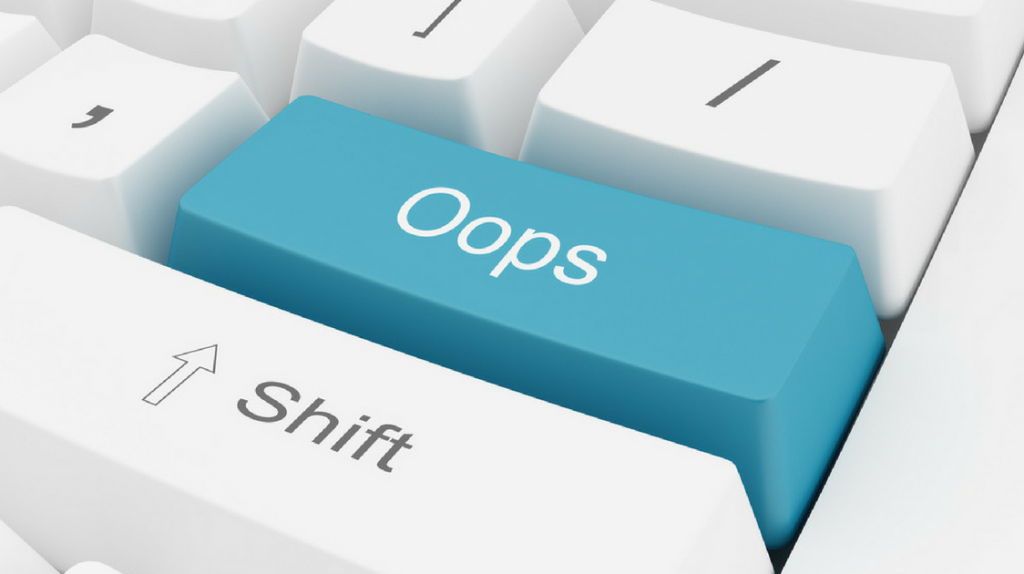
What is an email blunder and what can you do if you accidentally make a mistake in a marketing email? Here are some mistakes that companies have made and how they resolved the problem.
Email blunders have happened to hundreds of companies over the years. One recent example is the UK Blog Awards, where a handful of journalists and bloggers were sent an email saying they had been shortlisted for an award. This email had been sent to them by mistake, but the follow-up email that explained the blunder was even worse.
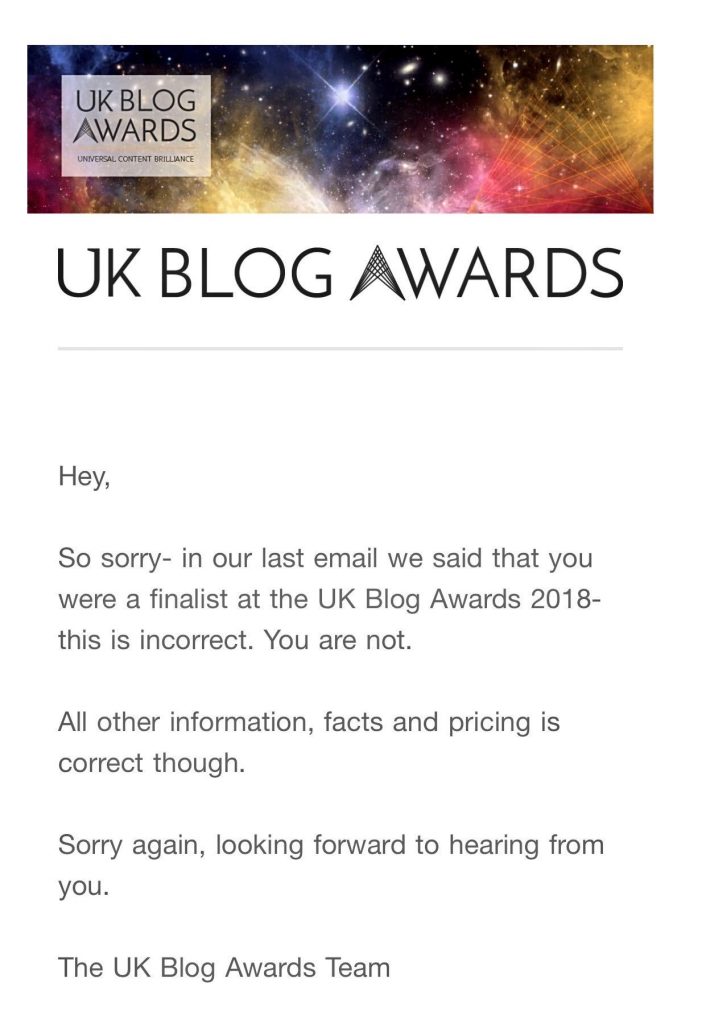
Although the MD of the UK Blog Awards did follow up the unappreciated emails and apologise stating that it was an external agency that had made the blunder, recipients were left with a bitter taste in their mouth and took to Twitter to share their disapproval.
The way an email mistake is handled says a lot about the company and could even generate more sales than the email being correct in the first place (although I wouldn’t suggest making a deliberate mistake to test!).
Here are some examples of follow-up emails after a blunder was made:
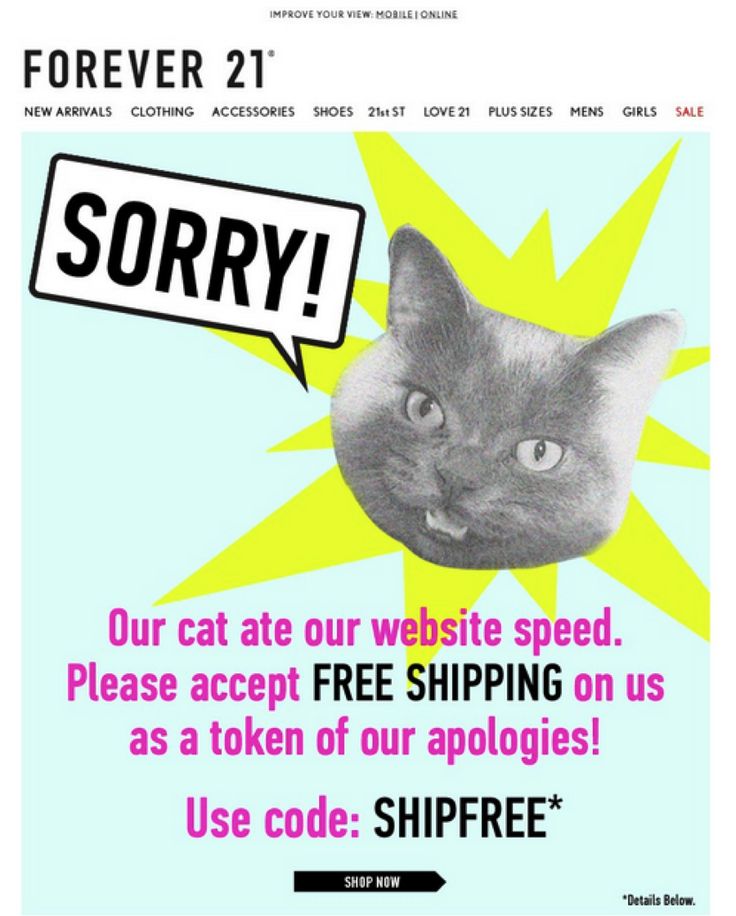
Forever 21: Website speed
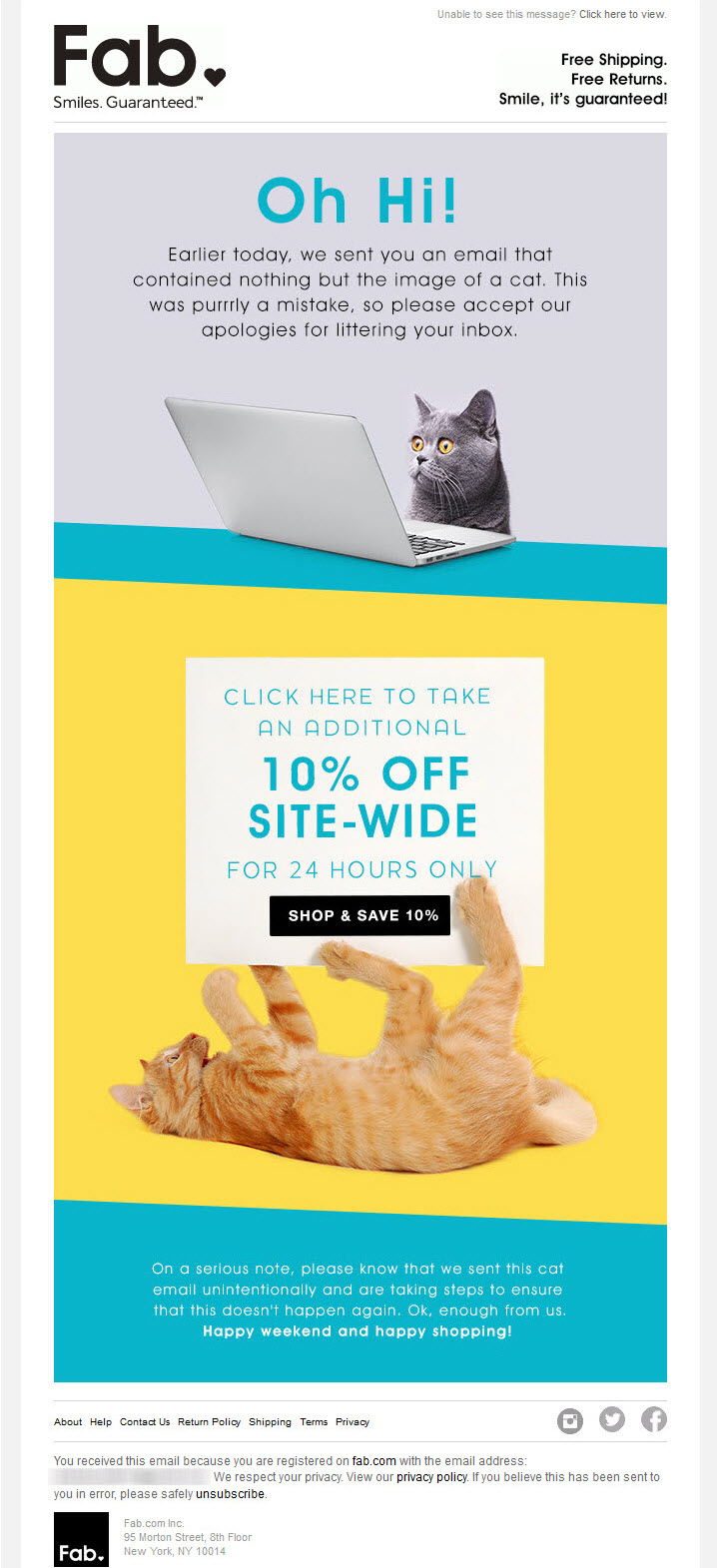
Fab: Incorrect email previously
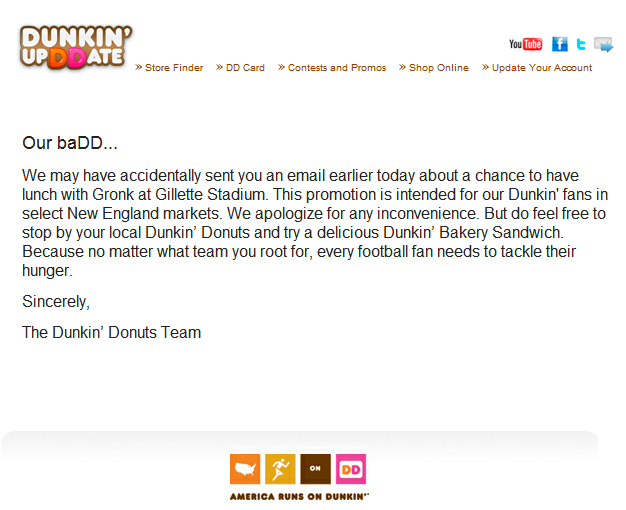
Dunkin’ Donuts: Incorrect recipient segment

Technology for Marketing in partnership with Digital Doughnut: Incorrect merge data in previous email
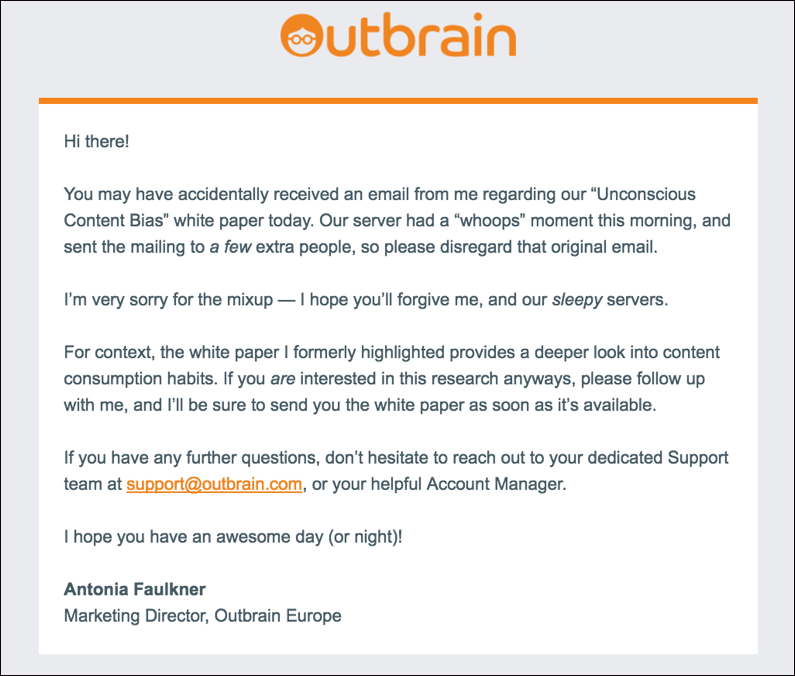
Outbrain: Incorrect recipient segment
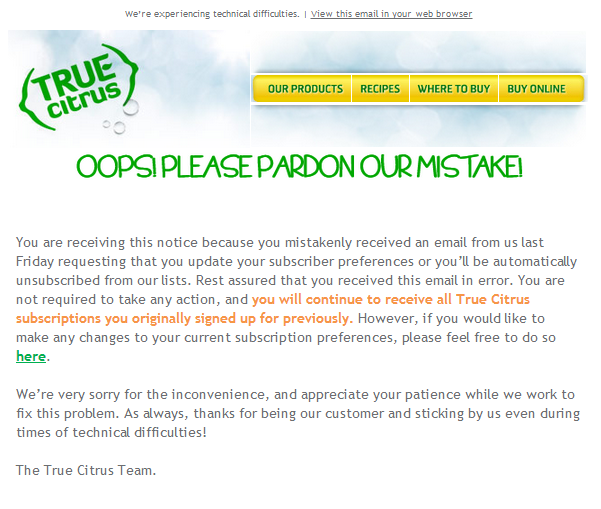
True Citrus: Incorrect email previously
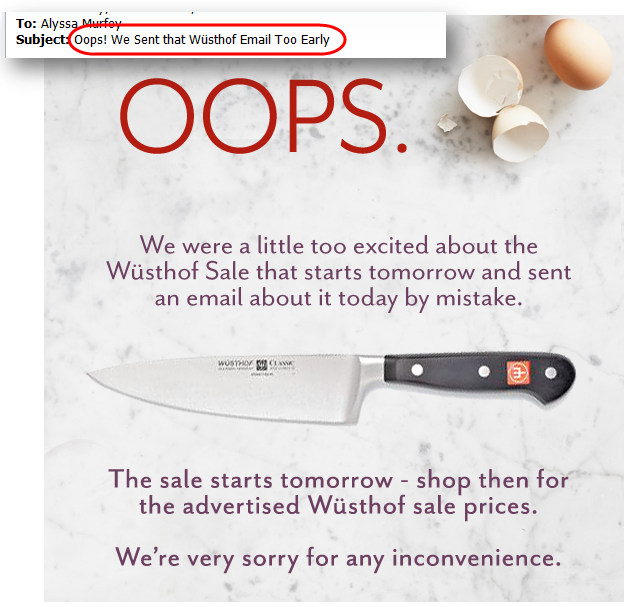
Wüsthof: email sent at incorrect time
There are many ways to approach your follow-up email – depending on the size and severity of the mistake, your company tone of voice and the subject of the original email.
With the General Data Protection Regulations (GDPR) coming into force, you’ll need to be even more careful about who you are sending messages to. If the recipients have not opted for that type of message, you could be breaching the regulations.
Some tips for dealing with email marketing mistakes:
If you’ve made a mistake in an email containing an offer or coupon it’s best to honour the offer. It can create great word-of-mouth for your company.
If you can’t honour an offer then it’s important to apologise. One of the most important things is to own up to a mistake and say you’re sorry – everyone makes mistakes sometimes.
Give something else away – offer something of value that will take the sting out of not receiving anything.
But the best thing to do is to have a process in place to double check all aspects of the email before you hover over that send button.
Here are a couple of guides to help you with getting it right the first time and dealing with email blunders the best way:

